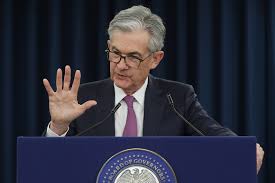During the Obama Administration, the Federal Reserve Board held interest rates close to zero for seven years. The economy stagnated.
But now, with the benchmark federal funds rate at 2.25% to 2.5% after the Fed increased rates nine times, President Trump is advocating for a return to ZIRP (zero interest rate policy).
Not quite ZIRP, perhaps, but he tweeted on April 30 that the Fed needs to cut its key policy rate by a full percentage point and restart quantitative easing, buying bonds to lower interest rates.
U-Turn, But No Full Circle
The Fed indicated in January that it is unlikely to raise rates at all during 2019, shelving its previous plan to raise rates twice (initially, three times) this year. With the economy showing unexpected strength, the Fed is showing some restraint by not increasing rates again – yet inflation remains low, so rates could potentially be lowered without a negative economic impact.
Regardless, the Fed has already made a policy U-turn by abandoning rate hikes and it’s not surprising that just four months later it’s not ready to go full circle and lower rates. As expected, the Fed did not raise interest rates when it met on May 1. As expected, it didn’t lower them, either.
In response, President Trump and the stock market sent the Fed a raspberry. The Dow Jones Industrial Average dropped more than 150 points after the Fed news conference, where Powell said that today’s low inflation may be “transitory,” CNBC reported, “dashing speculation the central bank was at least entertaining the idea of a rate cut because of tame inflation.”
The Argument for Lowering Rates
Addressing threats to the U.S. economy, President Trump has said, “I think the Fed is a much bigger problem than China,” because it has been increasing interest rates even though he wants them lowered. He’s called for lower rates, because he believes it would provide him with greater leverage as he negotiates trade deals with China and other countries.
He’s criticized the Fed for not accommodating his needs and there’s some logic to his advocacy of lower rates.
During the Obama Administration, ZIRP was accompanied by a historically high level of regulation and American corporations had the world’s highest tax rate. Today, some of the regulatory burden has been lifted and corporate tax rates have been lowered.
Tax reform and deregulation led to increased business investment, which has driven stronger economic growth.
“Unlike the years leading up to the last recession,” The Wall Street Journal reported, “the current economy isn’t as dependent on the housing market. Many economists consider housing to be a form of consumption, while capital investment in equipment, intellectual property and new plants pays off for years to come in better productivity and higher wages. This is the tax-reform gift that keeps on giving as lower tax rates that are fixed in law raise the return on capital that encourages more investment.”
While there are signs that business investment has been slowing, such as a report by the Commerce Department that shipments of core capital goods declined in April, lower borrowing costs could cause business investment to reaccelerate.
Conversely, if rates are lowered and a recession comes, the Fed will lose a potential weapon for boosting the economy.
New Strategy Needed
If President Trump really wanted to lower interest rates, he should have known that suggesting a rate cut would ensure that he would not get one.
When he practically ordered Fed Chair Jerome Powell to cut rates last fall, the Fed reacted by raising rates, causing a stock market swoon. The Fed is supposed to be politically independent and Powell likely doesn’t want to appear to be following the president’s orders.
Maybe President Trump should suggest a rate increase in a tweet before the next Fed meeting.

